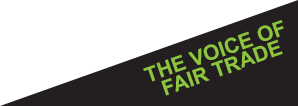There are many stories about the history of Fair Trade.
It all started in the United States, where Ten Thousand Villages (formerly Self Help Crafts) began buying needlework from Puerto Rico in 1946, and SERRV began to trade with poor communities in the South in the late 1940s. The first formal “Fair Trade” shop which sold these and other items opened in 1958 in the USA.
The earliest traces of Fair Trade in Europe date from the late 1950s when Oxfam UK started to sell crafts made by Chinese refugees in Oxfam shops. In 1964 it created the first Fair Trade Organization. Parallel initiatives were taking place in the Netherlands and in 1967 the importing organization, Fair Trade Original, was established.
At the same time, Dutch third world groups began to sell cane sugar with the message “by buying cane sugar you give people in poor countries a place in the sun of prosperity”. These groups went on to sell handicrafts from the South, and in 1969 the first “Third World Shop” opened. World Shops, or Fair Trade shops as they are called in other parts in the world, have played (and still play) a crucial role in the Fair Trade movement. They constitute not only points of sales but are also very active in campaigning and awareness-raising.
During the 1960s and 1970s, Non-Governmental Organizations (NGOs) and socially motivated individuals in many countries in Asia, Africa and Latin America perceived the need for fair marketing organizations which would provide advice, assistance and support to disadvantaged producers. Many such Southern Fair Trade Organizations were established, and links were made with the new organizations in the North. These relationships were based on partnership, dialogue, transparency and respect. The goal was greater equity in international trade.
Parallel to this citizens’ movement, the developing countries were addressing international political forums such as the second UNCTAD conference (United Nations Conference on Trade and Development) in Delhi in 1968, to communicate the message “Trade not Aid”. This approach put the emphasis on the establishment of equitable trade relations with the South, instead of seeing the North appropriate all the benefits and only returning a small part of these benefits in the form of development aid.
The growth of Fair Trade (or alternative trade as it was called in the early days) from the late 60s onwards has been associated primarily with development trade. It grew as a response to poverty and sometimes disaster in the South and focused on the marketing of craft products. Its founders were often the large development and sometimes religious agencies in European countries. These NGOs, working with their counterparts in countries in the South, assisted to establish Southern Fair Trade Organizations that organize producers and production, provide social services to producers, and export to the North. Alongside the development trade there was also a branch of solidarity trade. Organizations were set up to import goods from progressive countries in the South that were both politically and economically marginalised.





